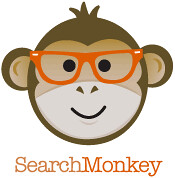 Yahoo notified me a few days ago in an email that their SearchMonkey program is about to undergo a change, with their developer tools, gallery and application preferences set to close down on October 1st.
Yahoo notified me a few days ago in an email that their SearchMonkey program is about to undergo a change, with their developer tools, gallery and application preferences set to close down on October 1st.
I wrote a few of the 163 search applications which were officially approved for the gallery:
Nostalgically, I’m bummed that the application development tools and gallery are going away. The Yahoo! team’s concept of enabling webmasters to have some say in custom-designing their own listings’ appearance in the search results was visionary. Marketers salivated at the prospect, and literally hundreds of people approached them in hopes of getting more influence over the search listings.
Indeed, the enhanced search result listings reportedly got around a 15% higher clickthrough rate, verifying many marketer’s theories that the jazzier listings would attract more attention from searchers, resulting in more conversion activities.
However, SearchMonkey didn’t quite live up to the hopes of internet marketers, for the most part. As Vanessa Fox stated, “If searchers never see the listings, where’s the motivation?”
I believe that initially only a handful of beta-test developers were allowed into the platform. Early on, I had difficulty getting approved for access, due apparently to being a member of an SEO agency. However, I ultimately persuaded those within Yahoo to approve me to develop apps, but I suspect that other search marketers likely were not so lucky — something which probably impacted how many people ultimately participated.
The SearchMonkey application platform required website developers to set up a data feed — either using semantic markup already found on their pages, or via screen-scraping that could be customized to harvest data based on the document object model. The data feed could then be tested on a handful of representative site pages, then the data extracted could be used to program the listing layout. The programming code was a pared-down version of PHP and the display apps could also be tested to insure they worked as expected.
The app platform gave a fascinating insight into how Yahoo’s bots operated, and how the search engineers set up their systems to interpret and display website content.
The key issue with SearchMonkey was in the process to approve apps for public consumption. It was possible to create a custom app which users could opt-into via your website. However, there was more promotional benefit for those applications which were visible by default for all users. After creating an app, one could submit it to be considered for the public gallery — a process whereby they critiqued the application and reviewed it to see if it followed the rules. The gate-guards in Yahoo were fairly restrictive with what apps they would approve — they couldn’t be “ads”, the site/company had to be sufficiently popular, and the results display had to be useful enough.
Yet, even the few dozens of apps which were approved to be in the gallery were still not available for Yahoo searchers by default. Only a very few apps were available by default — most apps had to be opted-into by Yahoo users in order to be seen in the SERPs.
Of the 163 apps approved in the gallery, I suspect a considerable percentage were developed by Yahoo’s own developers. If apps were more easily approved for publication by default instead of via opt-in, the adoption rate would have been much greater.
Within about a year, Google immitated Yahoo’s SearchMonkey concept with Rich Snippets, which are enhanced listing treatments based upon semantic markups such as microformats or RDFa, and do not require custom display development in a special platform.
So now, a couple of years after SearchMonkey came on the scene, custom app development seems to’ve stalled, and many of the existing apps in the gallery appear to be no longer maintained (ones I created for former clients were broken by those client’s site code changes, and I was not asked to update or maintain them, for instance).
So, it’s probably time for the gallery to go away and the developer platform to be closed-down. However, the innovations introduced with SearchMonkey are not disappearing completely.
According to Yahoo’s announcement, they will continue to show the structured data in listings on the Yahoo search pages, along with Microsoft’s listings. They intend to transition the structured data processing over to Microsoft over time. They also state that “Webmasters will continue to have the ability to affect the presentation of a search result through page markup on their site (microformats and RDFa).”
I think this means that Bing will be adopting enhanced listing treatments, based on semantic markup, and displayed by default for some sites.
If you’re following all this, the quick summary is that Yahoo! invented enhanced listing display in their SearchMonkey program, which was subsequently immitated by Google with Rich Snippets, and now Microsoft Bing will immitate both Yahoo! and Google.
It’s a real “monkey-see, monkey-do” sequence!
Tags: microformats, RDFa, Search Engine Results Pages, search results, SearchMonkey, semantic markup, SERPs, Yahoo




 ShareThis
ShareThis